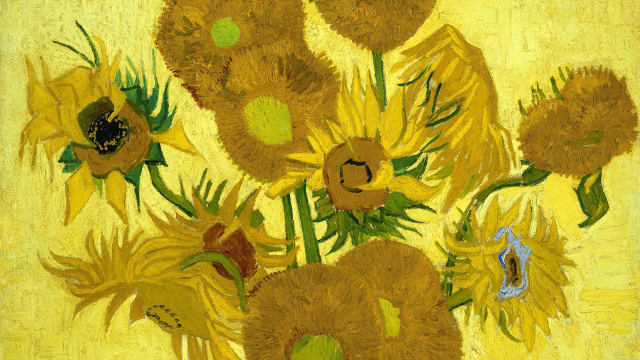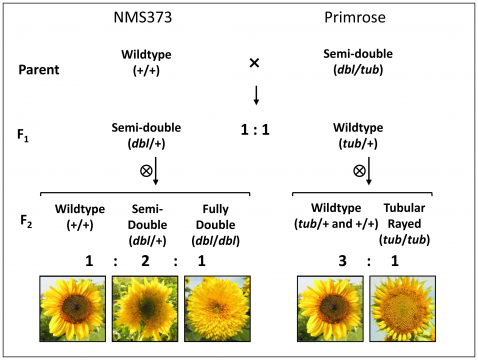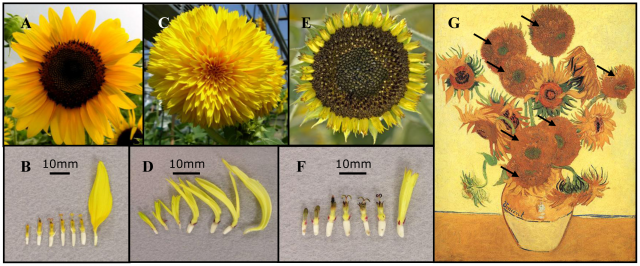
Most admirers of van Gogh's iconic "Sunflower" paintings gaze upon the golden inflorescences without any awareness of the scientific conundrum they pose. But researchers from the University of Georgia have finally cracked the case with a paper published in PLoS Genetics.


The puzzle begins with the fact that all flowers are either radially or bilaterally symmetrical. A buttercup is an example of radial symmetry; it looks the same no matter how you rotate it. An orchid, on the other hand, has bilateral symmetry, like a human face--the left and right sides look the same, but you can tell whether it's right side up or upside down.
Here's the sneaky thing: a lot of seemingly radially symmetrical flowers are actually clusters of tiny bilaterally symmetrical flowers, or florets. In fact, this is true of one of the biggest flower families, Asteraceae, which includes such familiar friends as dandelions, daisies and, yes, sunflowers.
Then the sunflower makes things extra complicated by building its cluster out of two kinds of florets: bilaterally symmetrical ray florets, and radially symmetrical disk florets. This may sound confusing, but it's obvious as soon as you look for it: the classic sunflower is a ring of petals (ray florets) surrounding a big disk that will become filled with seeds (fertilized disk florets). The ray florets are infertile--they're just there to help attract pollinators.



